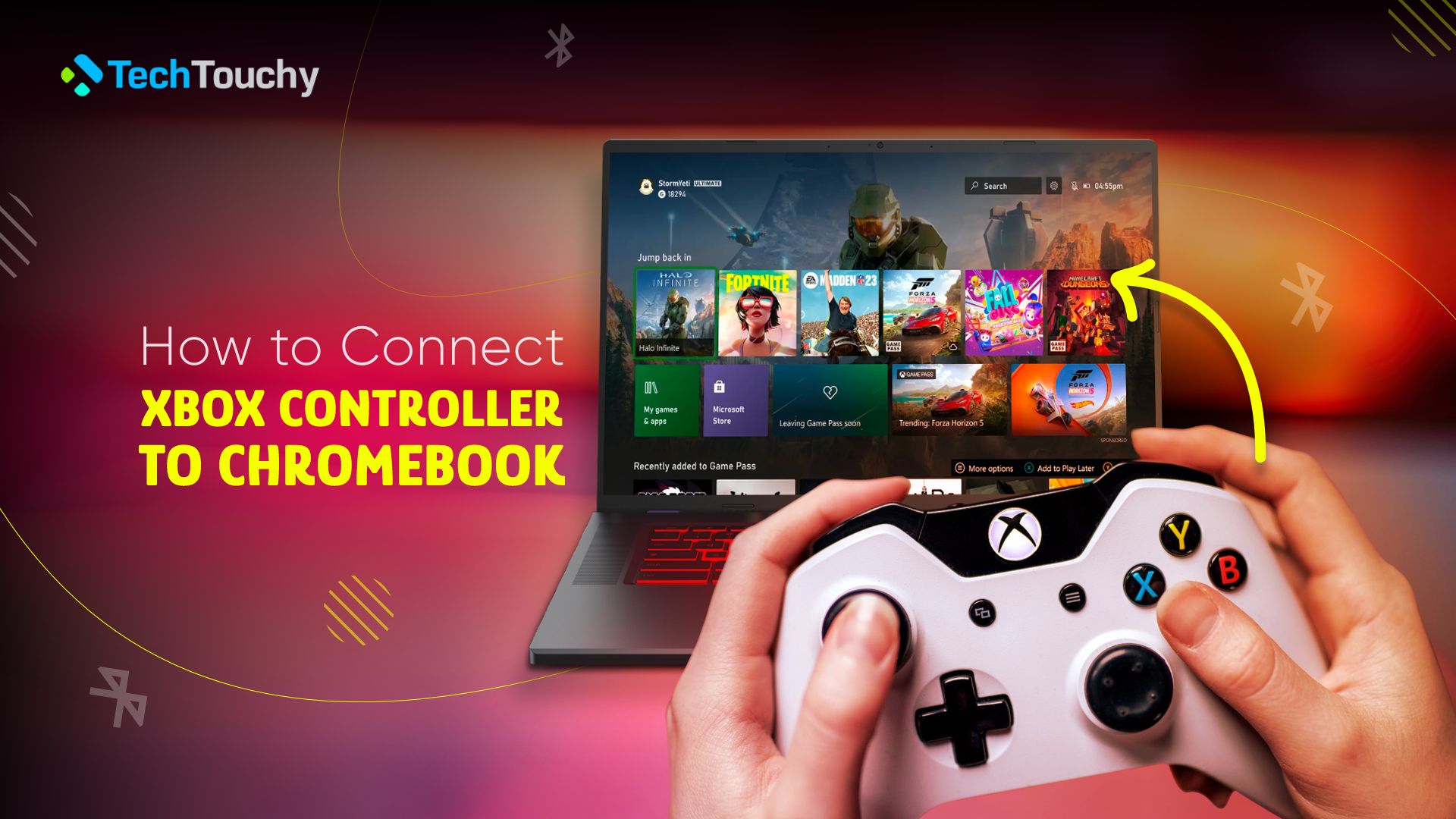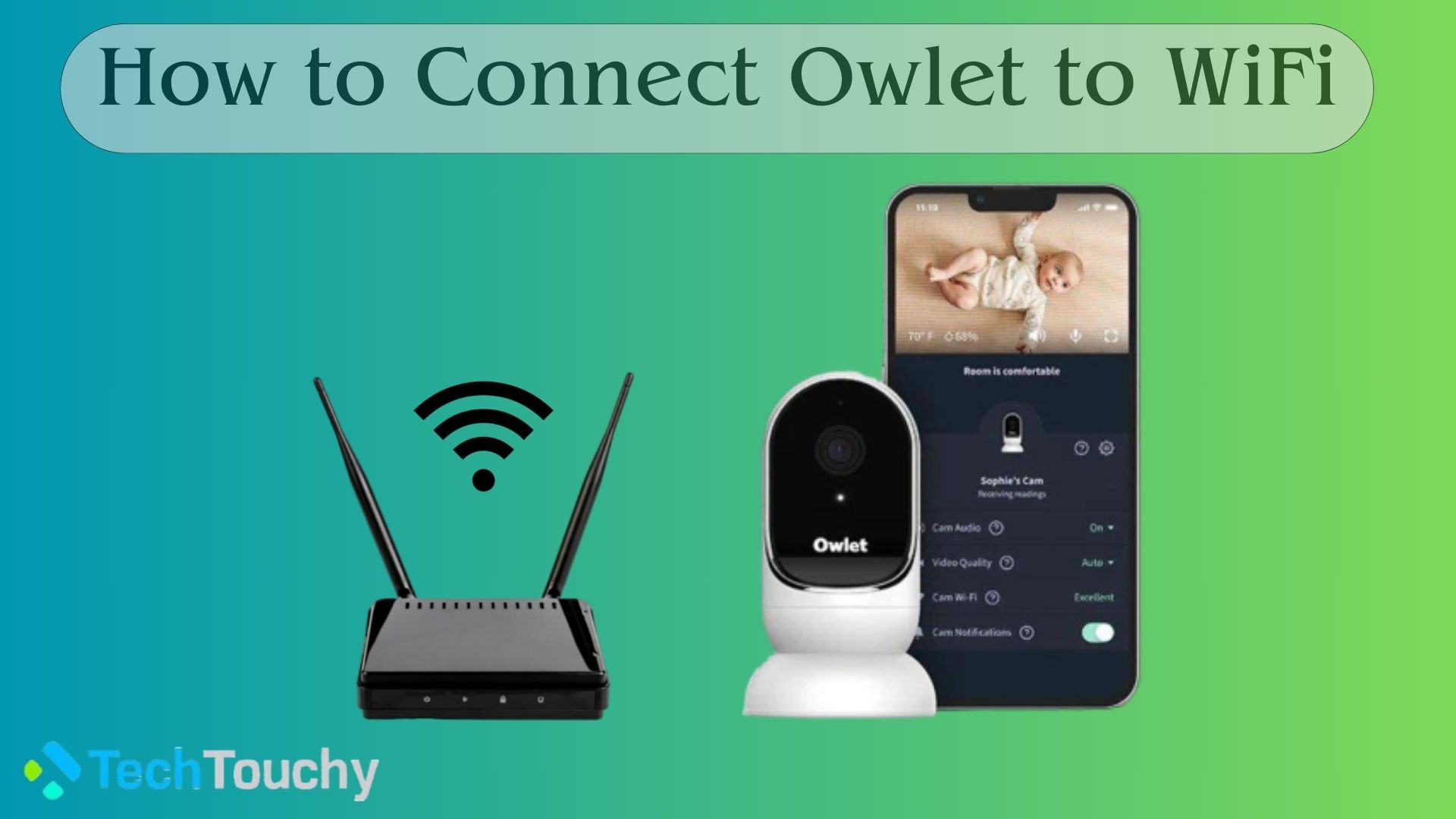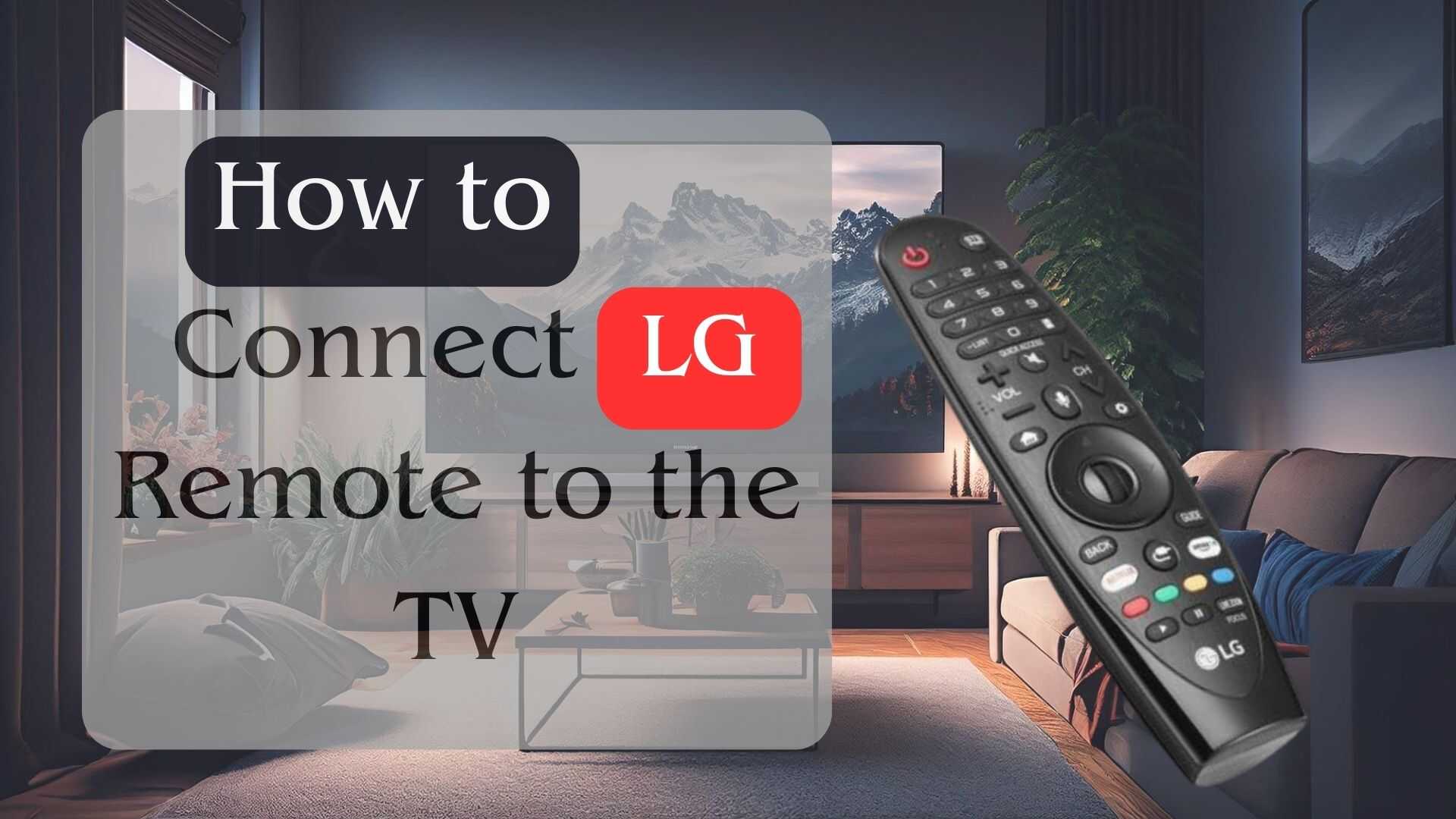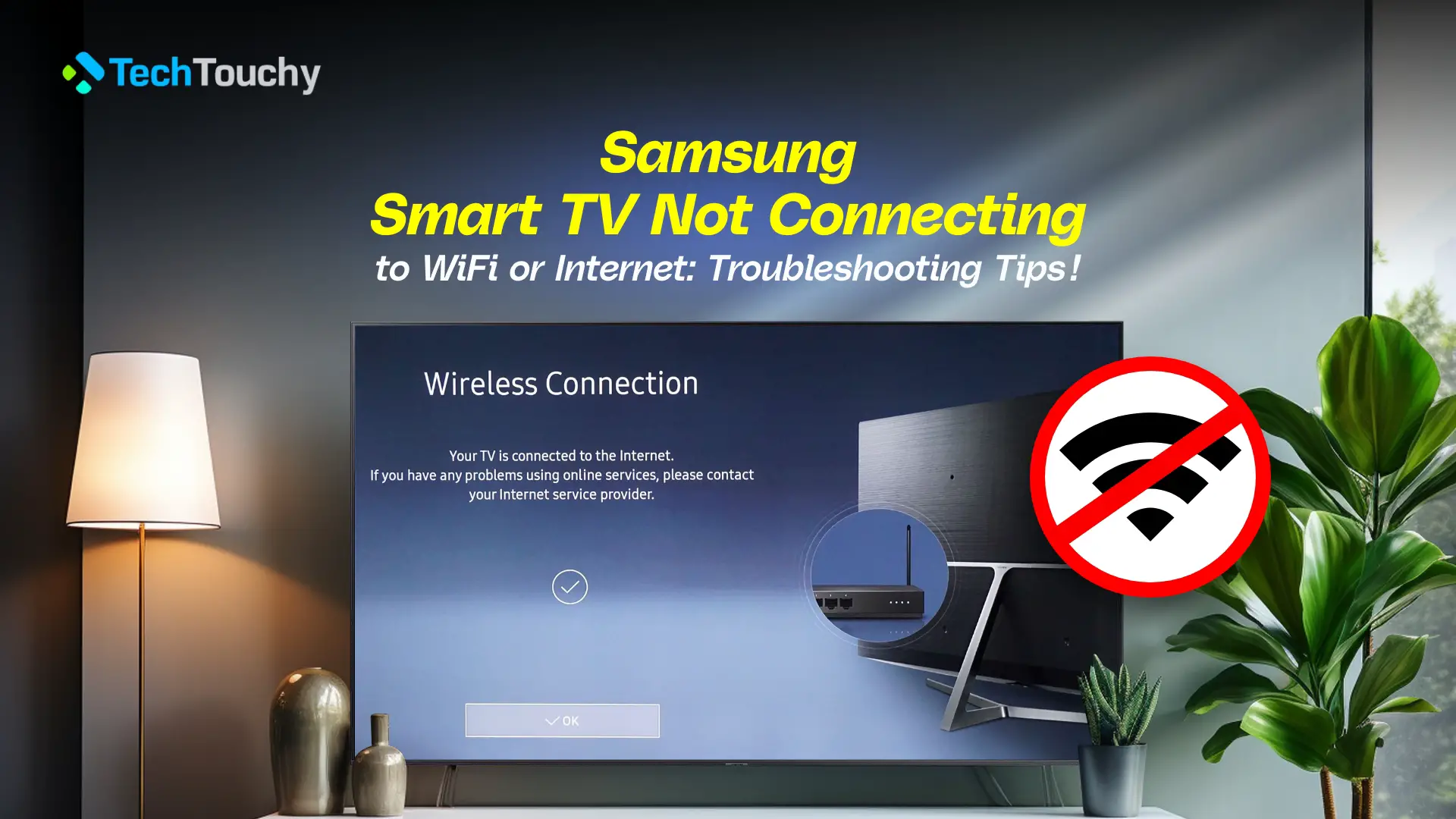How to Connect Subwoofer to Samsung Soundbar – Full Guide
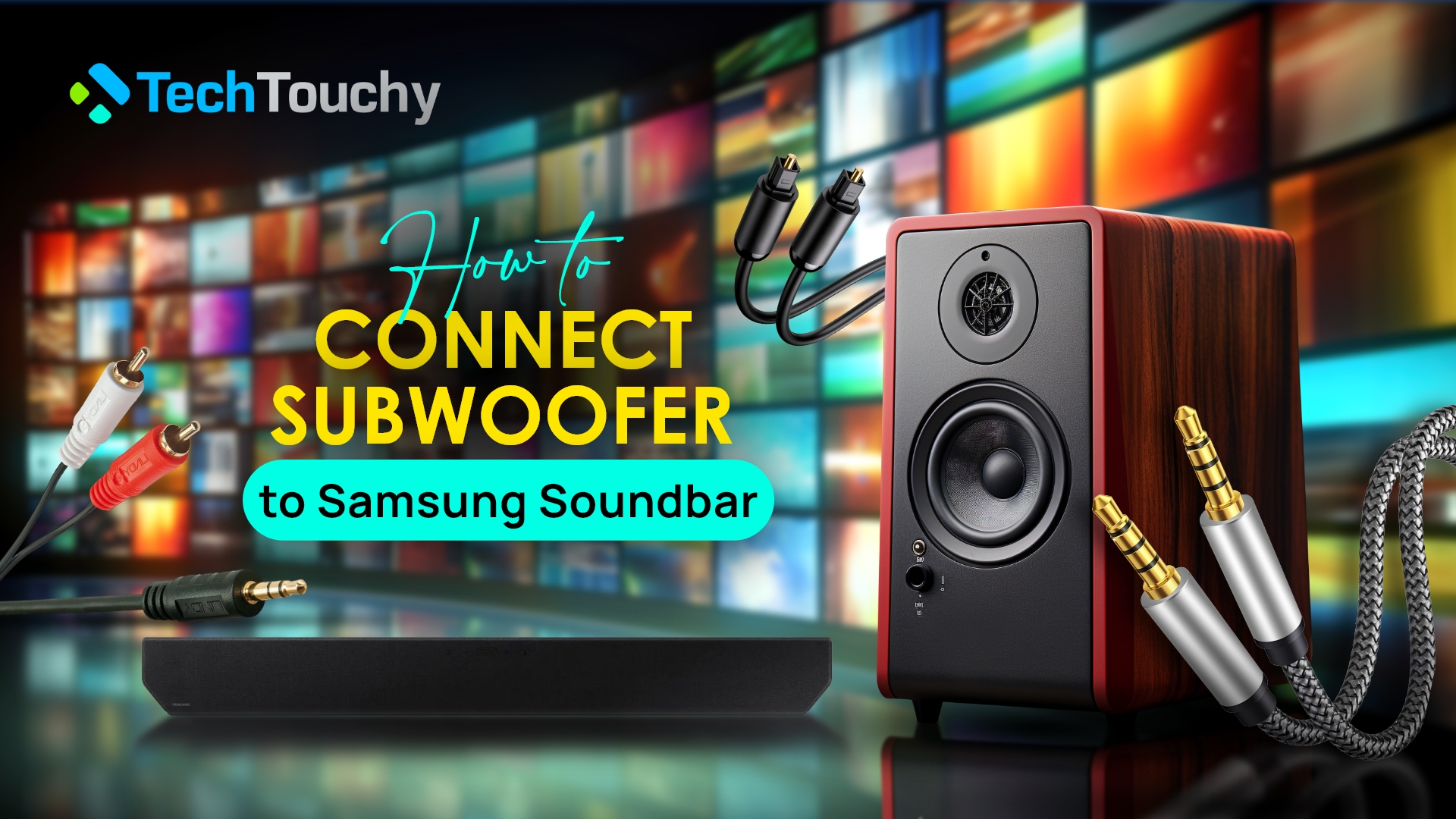
Over the past several years, soundbars have become increasingly popular for enhancing the audio quality of flat-screen TVs. Compared to conventional home theater speaker systems, they offer a sleek and space-saving alternative. Many consumers combine their soundbars with a subwoofer to provide an immersive audio experience and add depth and richness to their music.
In this comprehensive guide on how to connect a subwoofer to a Samsung soundbar, we will lead you through numerous methods and troubleshooting tips to ensure a flawless audio experience. Let’s now delve into the different ways that a subwoofer can be connected to a Samsung soundbar.
How to Connect Subwoofer to Samsung Soundbar Using Cables
To kick things off, we will explore the traditional ways of connecting any two things, and yes, that’s by using cables! A subwoofer can be connected to a Samsung soundbar mainly using 3 types of cables. The three primary cable types for this purpose are RCA, Optical, and AUX.
Method 1: Using RCA Cable
Audio device connections are traditionally made using RCA (Radio Corporation of America) wires. They have two or more connectors that are color-coded for the left and right audio channels. RCA cables provide a very straightforward wireless connection.
Due to their simplicity and reliability, RCA cables are widely used in home audio systems. They are a convenient option for connecting soundbars and subwoofers and thus are often included with many soundbar and subwoofer packages.
To connect your subwoofer using an RCA cable, follow the below steps:
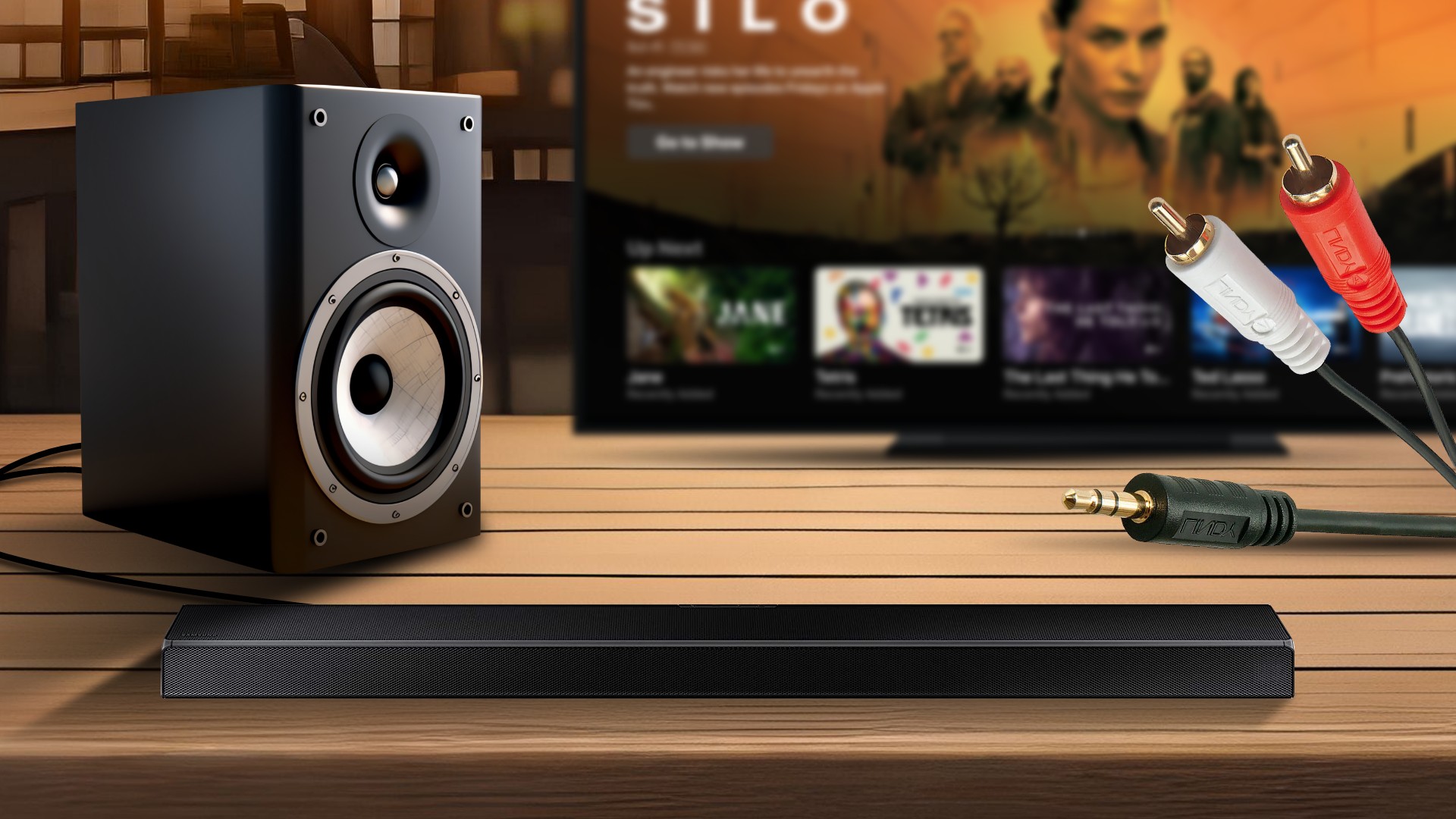
Step 1: Locating the Subwoofer port on the soundbar
Look for the “Subwoofer” port on the Samsung soundbar’s back. It is typically marked with an icon or labeled as such.
Step 2: Plugging the RCA Cable to the soundbar
Take one end of the RCA cable and insert the connectors into the “Subwoofer” port on the soundbar. Make sure that the red connector is plugged into the red port and the white connector into the white port.
Step 3: Connect the cable to the Subwoofer
Now, plug the other end of the RCA cable to the matching input on the subwoofer. An RCA input on the subwoofer should be designated for this purpose.
Step 4: Power on both devices
Before testing the connection, make sure that both the soundbar and subwoofer are powered on. This typically involves plugging them into a power source and turning them on using their respective power buttons.
Method 2: Using Optical Audio Cable
Optical audio cables offer a high-quality digital connection option. These cables provide great audio fidelity because they transfer audio signals using light. Both your Samsung soundbar and subwoofer are supposed to have ports for optical cable.
The following steps might help you to connect your subwoofer to the Samsung soundbar using an optical cable:
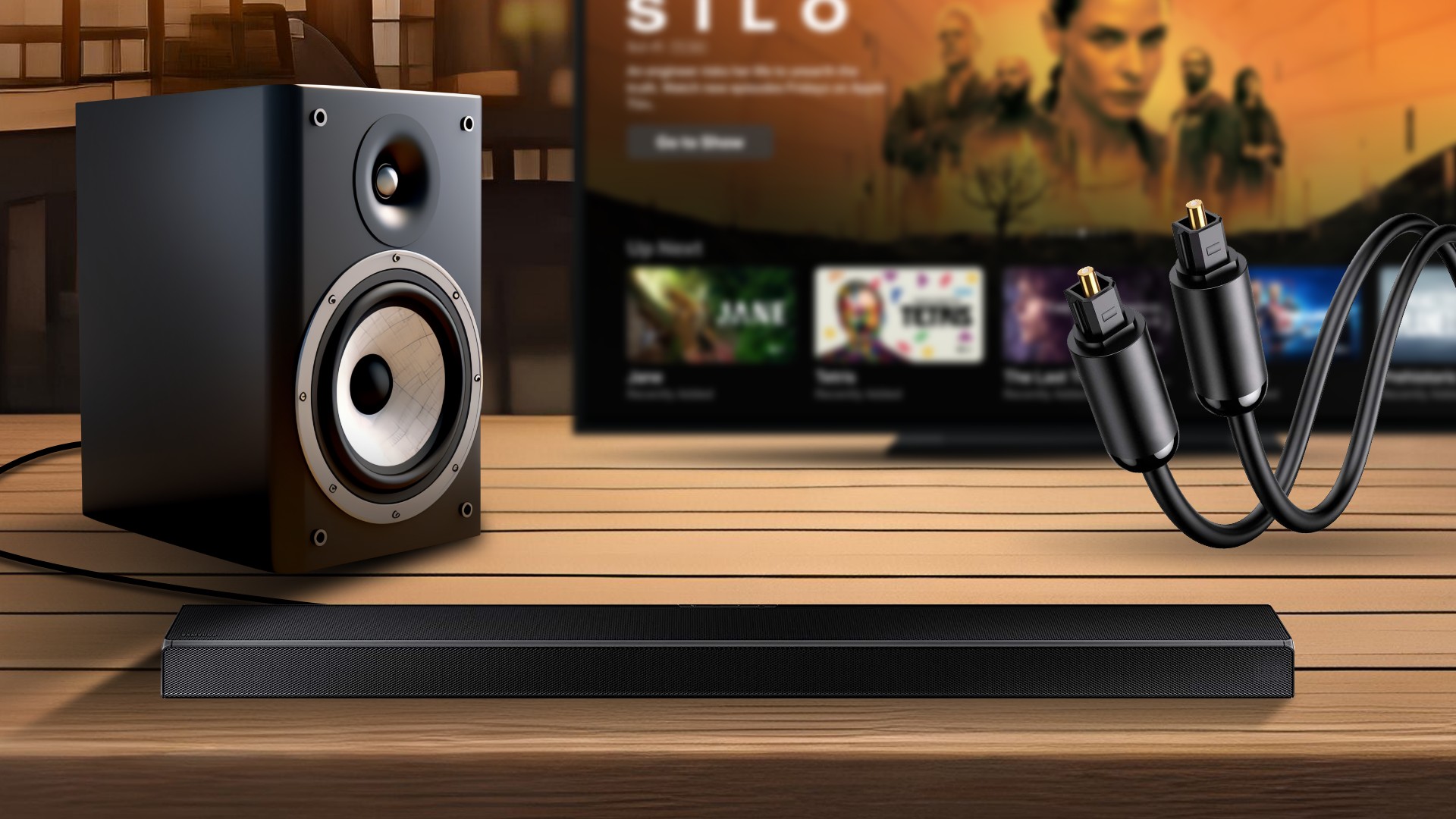
Step 1: Connect the optical cable to the Samsung soundbar
First, plug one end of the optical cable to the “Optical OUT” port on your Samsung soundbar. You’ll find this port near the “Subwoofer” port.
Step 2: Connect the optical cable to subwoofer
Next, plug the other end of the optical cable to the “Optical IN” port of your subwoofer.
Step 3: Power on both devices
Finally, make sure that both the soundbar and subwoofer are powered on, and if not, turn them on.
Method 3: Using AUX Cable
An AUX (auxiliary) cable provides a versatile wired option for connecting various audio devices. It is often used to link speakers or soundbars to mobile devices, tablets, and other audio sources.
To connect the subwoofer using an AUX cable, follow the mentioned steps:
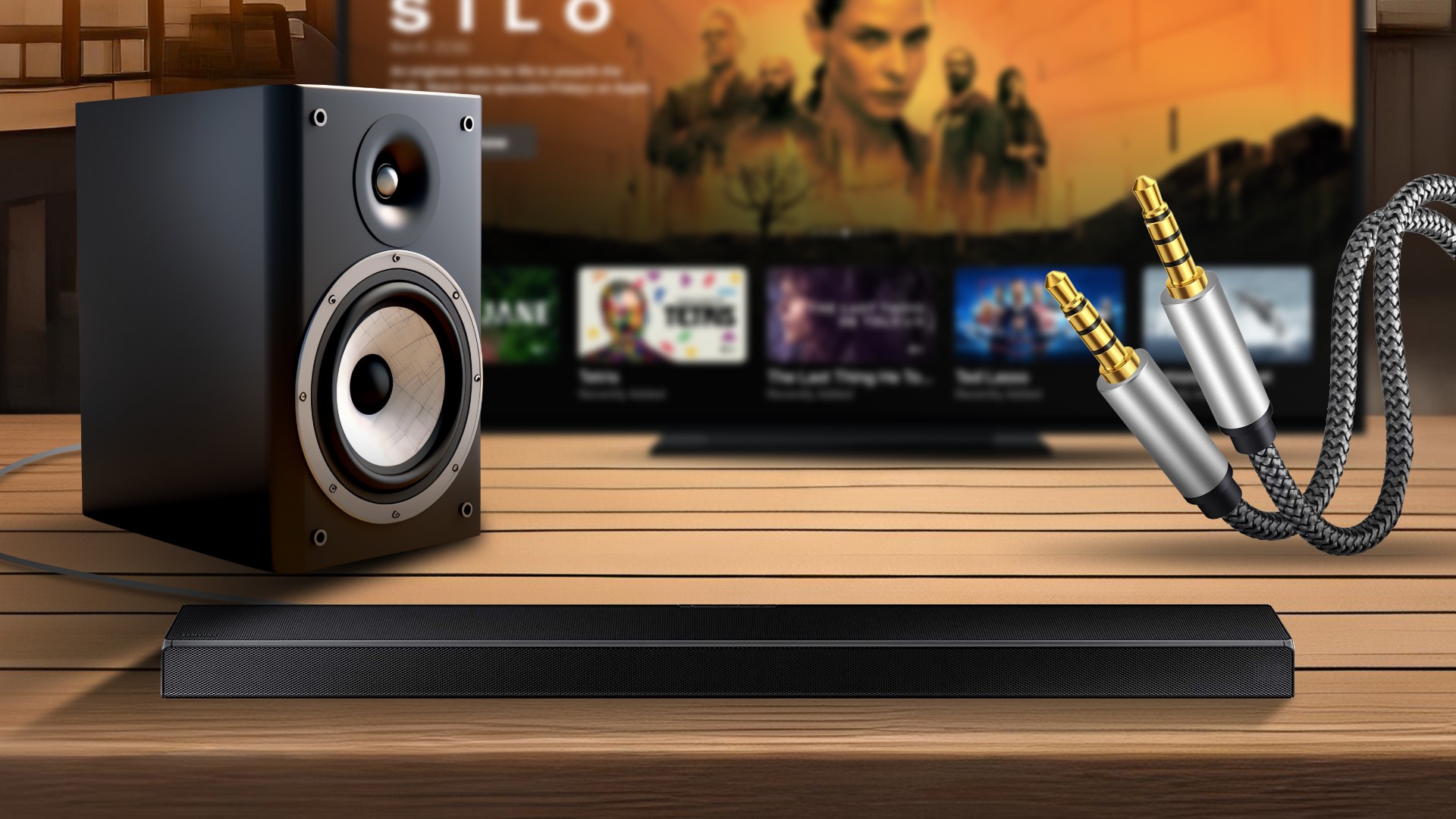
Step 1: Locating the “AUX Out” Connection
Instead of the “Subwoofer” port, this method involves locating the “AUX Out” connection on the Samsung soundbar. It can also be termed as “Line Out” or “Audio Out.”
Step 2: Inserting AUX Cable
Now, take one end of the AUX cable and insert it into the “AUX Out” port on the soundbar.
Step 3: Connecting to subwoofer
On your subwoofer, find the input labeled “AUX In” or “Line In.” Insert the other end of the AUX cable into this input.
Step 4: Switch on both devices
Not to mention, ensure both the devices are powered on.
These cable connection methods offer reliable and robust connections for the subwoofer and soundbar. However, due to their simplicity and lack of cable clutter, in recent years, wireless connections have gained more popularity. Let’s look at how to connect a subwoofer wirelessly to a Samsung soundbar.
How to Connect Subwoofer to Samsung Soundbar Wirelessly
Although the conventional method is through cable connections, certain Samsung soundbars and subwoofers provide wireless communication alternatives. But a sad part is that not all models are capable of using this method. Both automated and manual wireless connection techniques will be discussed now.
Automatic Connection
Some Samsung soundbars and subwoofers have the convenient feature of automatic wireless pairing. Even people who are less tech-savvy can use this function to make the setting process easier and more user-friendly.
Here’s a short description of how automatic wireless pairing works:
Step 1: Powering on both devices
Ensure that the soundbar and the subwoofer are powered on, and pairing mode is switched on.
Step 2: Proximity
Place the subwoofer somewhere near the soundbar. This proximity is essential for a successful wireless connection.
Step 3: Pairing
On the soundbar’s remote control or control panel, press the “Pair” or “Connect” button. The pairing procedure is started with this step.
Step 4: Automatic Pairing
The soundbar will search for compatible devices. If it finds the subwoofer, it will automatically start the pairing process.
Step 5: Confirmation
Once the pairing is successful, a confirmation sound is heard, or a visual indicator on the soundbar is displayed.
**It’s important to note that the exact steps for automatic pairing may change based on the specific Samsung soundbar and subwoofer models. For this reason, it is therefore preferred to look into the user manuals included with the gadgets.
Manual Connection
You can choose for manual wireless connection in cases where automatic pairing fails or if your devices do not support automatic pairing. Manual pairing may be a bit work-intensive, but it offers a workaround when automatic pairing isn’t an option.
To perform a manual wireless connection, follow the below general steps:
Step 1: Powering on both devices
Ensure that the soundbar and the subwoofer are powered on.
Step 2: Accessing the Soundbar’s Settings:
Use the soundbar’s remote control to go to the control panel to access its settings menu.
Step 3: Navigating to Wireless or Bluetooth Settings
In the settings menu, search for the “Wireless” or “Bluetooth” option.
Step 4: Selecting Pair New Device or Add Subwoofer
Look for options such as “Pair New Device,” “Add Subwoofer,” or any similar command related to connecting a subwoofer.
Step 5: On-Screen Instructions
Usually, the soundbar will use on-screen instructions to help you through the manual pairing procedure. In order to do this, you need to choose your subwoofer from a list of available devices before verifying the connection.
Step 6: Confirmation
Once the manual pairing is successful, you will hear a confirmation sound or a confirmation notification.
Samsung soundbar and subwoofer not connecting: Reasons and fixes
Here, we will share some reasons for the soundbar and the subwoofer not connecting with each other. Also, we will share several troubleshooting tips to resolve these issues.
Reasons for the Samsung soundbar and subwoofer not connecting with each other
Signal Interference
Signal interference is a typical cause of connectivity problems. Electronic devices, Wi-Fi routers, and even physical obstacles can disrupt the wireless connection between the soundbar and subwoofer.
Outdated Firmware
Compatibility and connection issues can result from out-of-date firmware on the soundbar or subwoofer.
Bluetooth Pairing Problems
The devices may not pair correctly due to incorrect pairing procedures, outdated Bluetooth software, or issues with the devices’ Bluetooth modules.
Incompatible Models
Incompatibility can result from differences in model numbers or the use of devices from different manufacturers.
Configuration Errors
The soundbar or subwoofer may not connect properly if the settings or configurations are incorrect.
Fixes for Samsung soundbar and subwoofer connectivity issues
Address Signal Interference
To overcome signal interference, check around the soundbar and subwoofer so that there are no electronic or physical obstructions producing noise.
Update Firmware
To resolve issues related to outdated firmware, check for firmware updates for both the soundbar and subwoofer. Update the firmware if the latest version is yet to be updated.
Verify Bluetooth Pairing
If you’re encountering Bluetooth pairing problems, ensure that Bluetooth is enabled on both devices. Ensure the correct procedure is followed when pairing the two devices. Repeat the pairing process if needed.
Check Compatibility
Verify that your Samsung soundbar and subwoofer are compatible with each other.
Review Configuration Settings
You need to check the settings for both devices to ensure that the input source is correctly selected and sound modes are appropriately configured.
Perform a Factory Reset
If the above methods fail, try resetting both devices. Find out how to reset your Samsung soundbar.
Contact Customer Support
Please contact the customer support service if the above troubleshooting methods aren’t working.
Conclusion
By optimizing the connection between your Samsung soundbar and subwoofer, the audio quality significantly improves. We hope that this article on how to connect subwoofer to Samsung soundbar has given you the knowledge and troubleshooting abilities to help you with your audio setup.
Related Posts:

